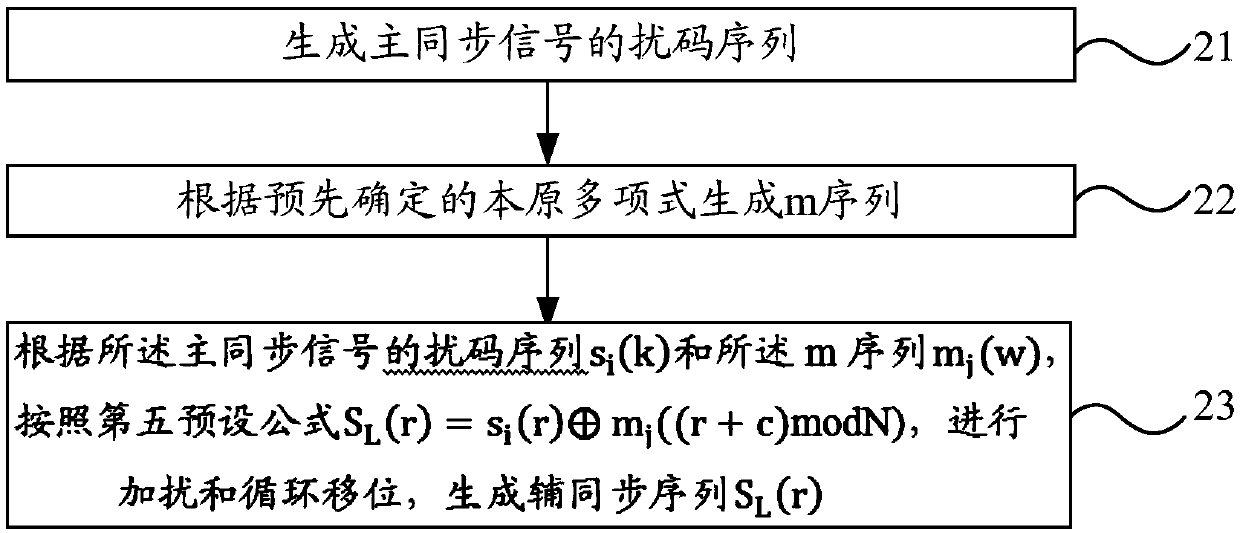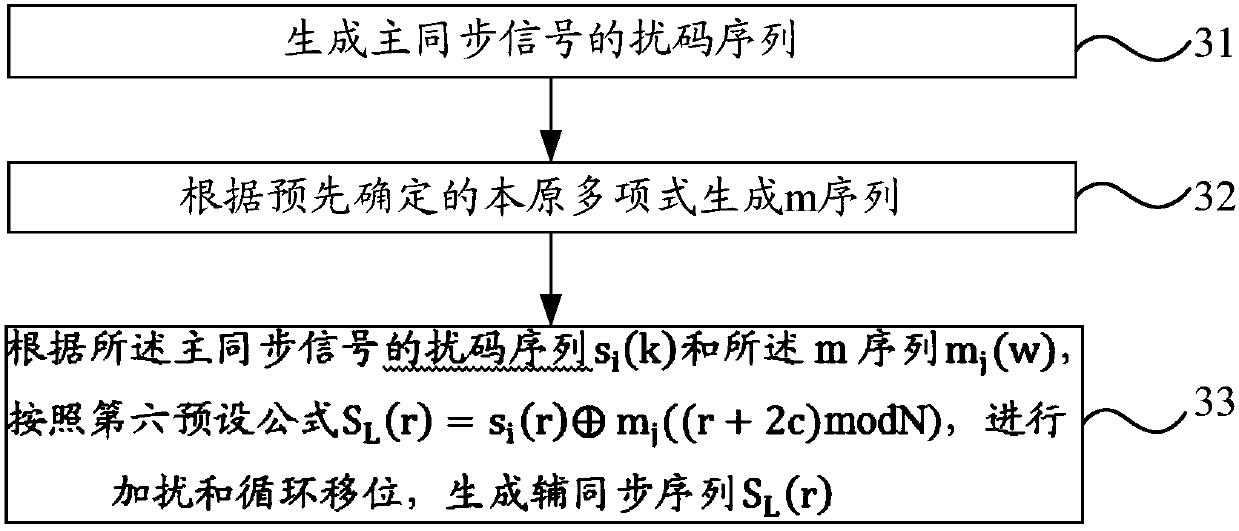Secondary synchronization sequence generating method, detection method, base station and user equipment
A technology of secondary synchronization sequence and base station, which is applied in the field of communication and can solve problems such as long delay
- Summary
- Abstract
- Description
- Claims
- Application Information
AI Technical Summary
Problems solved by technology
Method used
Image
Examples
no. 1 example
[0115] like figure 1 As shown, an embodiment of the present invention provides a method for generating a secondary synchronization sequence, which specifically includes the following steps:
[0116] Step 11: Generate a scrambling sequence for the primary synchronization signal.
[0117] Wherein, the generation of the secondary synchronization sequence is completed by the base station. Specifically, the base station may generate and send the secondary synchronization sequence every preset time interval, or the base station may generate and send the secondary synchronization sequence once through configuration. When the user equipment starts up and needs to synchronize with the system network, or when the user equipment drops downlink during use (ie, downlink out-of-sync), the user equipment can receive the secondary synchronization sequence sent by the base station to perform the subsequent synchronization process.
[0118] However, in the embodiment of the present invention,...
no. 2 example
[0131] like figure 2 As shown, the second embodiment of the present invention provides a method for generating a secondary synchronization sequence. When the number of scrambling sequences of the primary synchronization signal is three and the number of m sequences is three, the secondary synchronization sequence of the embodiment of the present invention is The generation method of the synchronization sequence specifically includes:
[0132] Step 21: Generate a scrambling sequence of the primary synchronization signal.
[0133] Preferably, step 21 includes:
[0134] According to the first preset formula Calculate the first reference sequence x(h), where x(h) represents the h-th element in the first reference sequence, and the value of h is an integer from 0 to N-1 in sequence, The value of the value is an integer from 0 to N-8, and the binary system composed of x(0), x(1), x(2), x(3), x(4), x(5), and x(6) sequence is a non-zero sequence constant;
[0135] According to...
no. 3 example
[0177] like image 3 As shown, the third embodiment of the present invention provides a method for generating a secondary synchronization sequence. When the number of scrambling sequences of the primary synchronization signal is three and the number of m sequences is six, the secondary synchronization sequence of the embodiment of the present invention is The generation method of the synchronization sequence specifically includes:
[0178] Step 31: Generate a scrambling sequence of the primary synchronization signal.
[0179] Preferably, step 31 includes:
[0180] According to the first preset formula Calculate the first reference sequence x(h), where x(h) represents the h-th element in the first reference sequence, and the value of h is an integer from 0 to N-1 in sequence, The value of the value is an integer from 0 to N-8, and the binary system composed of x(0), x(1), x(2), x(3), x(4), x(5), and x(6) sequence is a non-zero sequence constant;
[0181] According to the...
PUM
 Login to View More
Login to View More Abstract
Description
Claims
Application Information
 Login to View More
Login to View More - R&D
- Intellectual Property
- Life Sciences
- Materials
- Tech Scout
- Unparalleled Data Quality
- Higher Quality Content
- 60% Fewer Hallucinations
Browse by: Latest US Patents, China's latest patents, Technical Efficacy Thesaurus, Application Domain, Technology Topic, Popular Technical Reports.
© 2025 PatSnap. All rights reserved.Legal|Privacy policy|Modern Slavery Act Transparency Statement|Sitemap|About US| Contact US: help@patsnap.com



